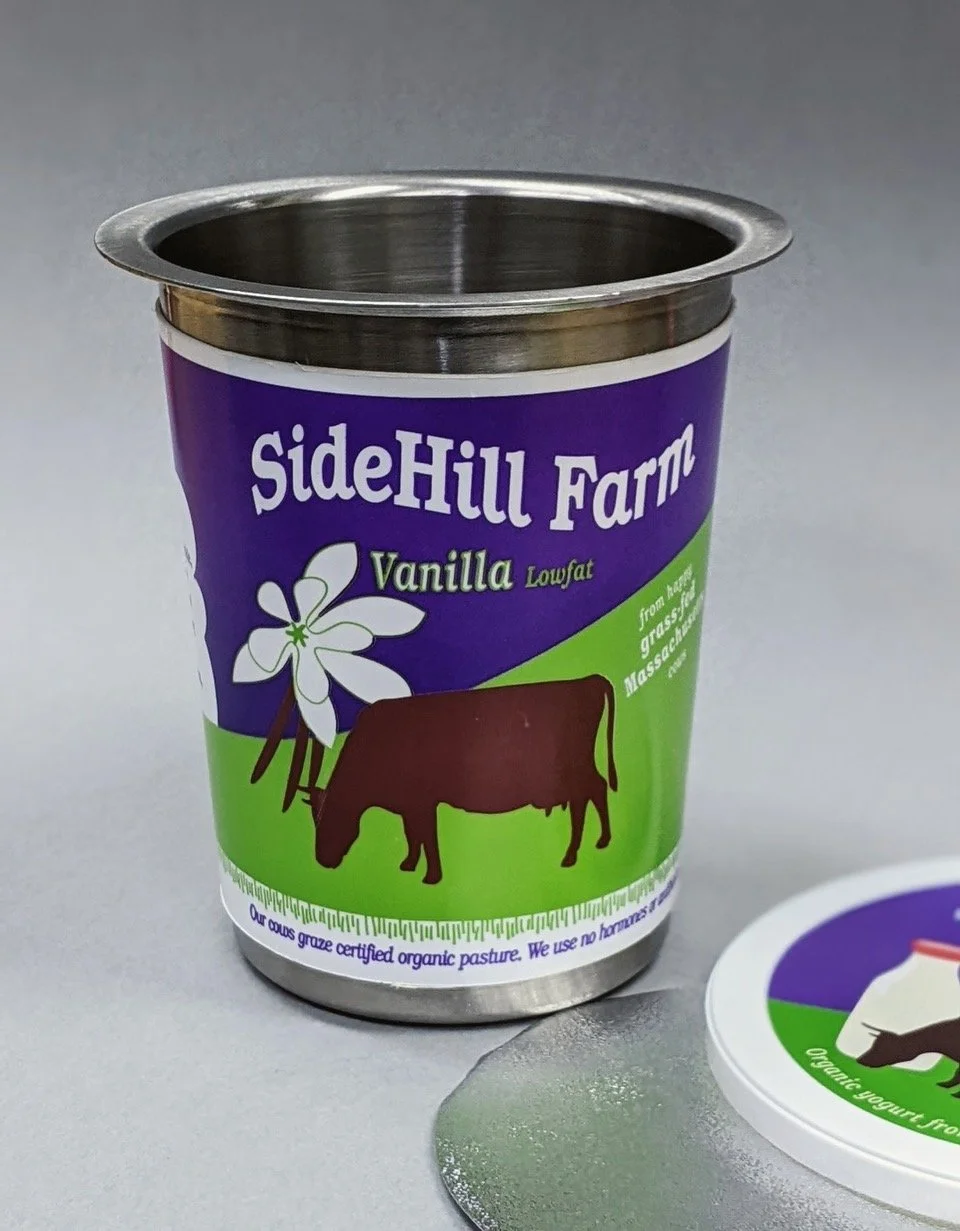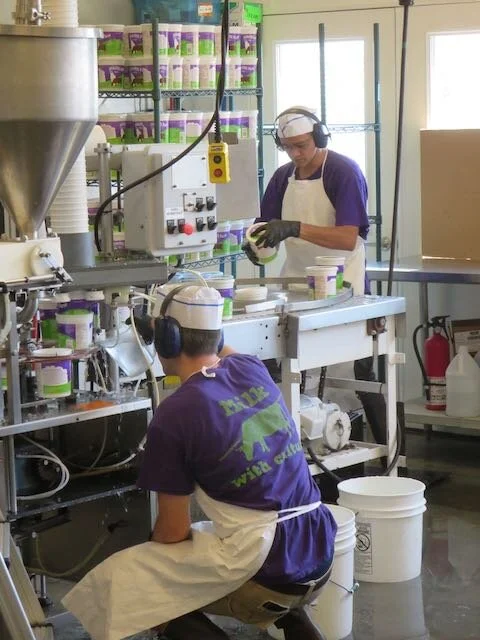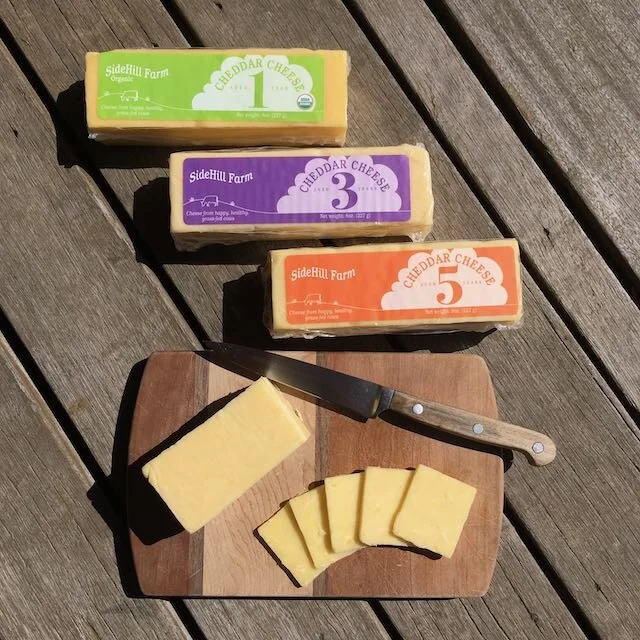We are now one month into the beginning of huge transition for Sidehill Farm. As we announced in September of 2018, we (Amy and Paul) are looking to focus our energies on the yogurt-making part of Sidehill Farm, and to find a young couple who want to operate the dairy farm side of the business. After nearly a year of searching, we have met the farmers of our dreams! Gus and Kyra Tafel, and their 3 adorable daughters Eva, Laurelye, and Ronan, have arrived here in Hawley to work for the summer, and learn the ins-and-outs of our systems before taking on ownership of the farmland and dairy herd around the end of the year. They have moved into the house next to the farm shop and have started working with us daily on the farm.
Gus and Kyra arrive here from central NY, where they were milking certified organic, 100% grass-fed cows, and selling the milk to a small creamery making yogurt that was sold into NYC. The yogurt brand folded, and they lost their milk contract. They also had solid markets for their organic beef, pork, lamb, and chicken; but without the milk contract, the farm was not financially viable, and they were forced to sell the milk cows and find off-farm work. Fortunately, they found us!
They have brought with them a herd of beef cows, a handful of dairy heifers, 40 sheep, a flock of turkeys, and a friendly dog named Mojo. It seems like we have animals everywhere now! You’ll see their gorgeous chestnut colored heritage breed Red Poll beef cows grazing around the farm, a few mixed in with the milking herd. White and brown Dorset sheep are grazing the pastures behind the house, and now finally appear to be content to stay within their fences. From the galaxy of little hoofprints all over the farm, it appears they had both a soccer game and a square dance one evening when all the humans were away. Shaun the Sheep would be proud. We are now hiding the keys to all the vehicles, just in case.
And of course, there is an amazing back story. Kyra’s aunt Joyce, was Amy’s Dad’s very first PhD student in biochemistry at the University of New Hampshire in the 1970s! Joyce remembers Amy as a 5 year old girl – just about Eva’s age. Whoa!
We are incredibly excited about their arrival, and feel that we are already forging the structure of a partnership that will keep both Sidehill Farm Yogurt, and Sidehill Farm Dairy vital and thriving. Gus has moved smoothly into a herd management role here, and his judgment seems both sensible and solid, and to include the few requisite crazy ideas that occasionally change everything for the better. We can already see that he just might be better at milking cows than we are! Kyra is tending to sheep, calves, and 3 enthusiastic and energetic daughters; and is bringing her own expertise to our pool of organic animal health resources. Eva (6) has learned all the cow names and helps with milking, Laurelye (4) is now in charge of checking for ripe tomatoes in the greenhouse and quality testing on sugarsnap peas, and Ronan (2) holds the funnel to fill calf bottles, and wants you to know that yesterday she walked all the way from the house to the cow barn by herself despite wearing 2 different shoes that were on the wrong feet.
These first four weeks have gone so well that we were actually able to get out of their hair for a whole week, and take a vacation! Gus and Kyra want to keep challenging themselves to handle the dairy on their own, and our confidence in them grows every day. After essentially not having a single day off for more than a year, we are liking this trajectory a lot! Over the next couple of months, we will be slowly moving them into involvement with the farm shop, so they can polish their retail management skills. You’ll probably see Kyra and Gus and the girls around when you come to the farm shop over the next few weeks, so please take time to introduce yourself – they are eager to meet people in their new community!
And yes, for those of you have noticed that we (Amy and Paul) are no longer living at the farm - we are currently homeless, and learning about commuting to work each day! We are so grateful to our friends who are supplying us with housesitting gigs and empty guest rooms and campers to stay in through this transition period. We are hoping to buy a house and a little land (not enough to graze cows on!) in Ashfield or somewhere within 15-20 minutes of the farm, so if you hear of anything, please let us know!






